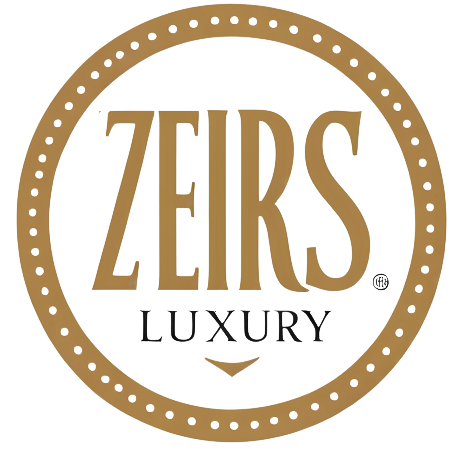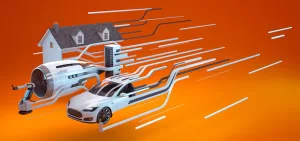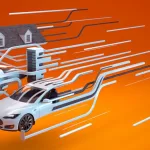/cdn.vox-cdn.com/uploads/chorus_asset/file/24714535/236676_01_What_is_a_smart_home_and_do_you_need_one_SHaddad.jpg)
Introduction to Smart Homes and Luxury Living
As someone deeply engrossed in the evolution of residential technology, I can clearly see how the idea of the “smart home” has shifted from a futuristic concept to an everyday reality, especially in the luxury real estate sector. For high-end clients, these advancements are not just about the novelty but rather intrinsic to their way of life—delivering an unparalleled blend of comfort, convenience, and security.
Defining Smart Home Technology in Modern Real Estate
In my professional experience, Smart Home Technology encapsulates a variety of advanced features and systems integrated into a home which are designed to automate or enhance various tasks. These typically include:
– **Climate Control Systems**: such as smart thermostats that adjust temperatures to the residents’ preferences and reduce energy consumption.
– **Home Security**: featuring advanced surveillance cameras, motion detectors, and automated locks that enhance safety and can be managed remotely.
– **Lighting**: smart lighting solutions that adjust based on time of day or activity, controlled via voice, mobile devices, or AI.
– **Entertainment Systems**: including automated home theaters and multi-room audio systems that cater to leisure and entertainment needs seamlessly.
– **Energy Management**: such as solar panel integration and smart meters to monitor and optimize energy usage.
– **Health and Wellness Systems**: including air and water purification technologies and even sleep-improving lighting patterns.
For those of us in the luxury real estate sphere, these systems have become more than mere add-ons—they represent a fundamental component of what defines a modern luxury residence.
The Journey from Traditional to High-Tech Homes
Reflecting on the journey from traditional residential dwellings to today’s high-tech homes, I’ve observed a budding trend that began with simple automation like garage door openers and gradually evolved into fully-integrated systems managed by intuitive interfaces. It’s a transformation that mirrors the broader trajectory of technology itself.
Luxury homes, in particular, stand on the cutting edge of this evolution. The merged sophistication of glass as a construction material alongside advancements in smart home technology has led to structures that are not only aesthetically breathtaking but also incredibly adaptive to the occupants’ lifestyle.
Smart glass, or electrochromic glass, permits homeowners to control transparency and therefore privacy, as well as thermal regulation, at the touch of a button. Meanwhile, voice-controlled assistants and IoT (Internet of Things) connectivity bring a sleek synergy between the occupant and the living space, while biometric security systems afford peace of mind with an air of exclusivity.
The role of tech in real estate is revolutionizing the industry, propelling smart homes from a niche luxury to a widespread expectation among high-end property seekers. As a professional watching this space closely, I maintain that the delineation between home and tech is becoming increasingly blurred—crafting a new era for luxury living that is as intelligent as it is elegant.
The Early Days of Smart Home Technology
The Genesis of Home Automation
– **Inception of Smart Homes**: The idea of a “smart” home has been around for decades, initially surfacing as simple domestic labor-saving devices.
– **Early Innovations**: Pioneering technologies included centralized control systems for lighting, heating, and basic security.
– **Connectivity Advancements**: Development in wireless technology during the 1990s and early 2000s laid the groundwork for more interconnected and user-friendly smart home systems.
Milestones in Smart Home Evolution
– **Integration of Internet**: The introduction of the internet brought about a significant leap forward, enabling remote control and monitoring of home devices.
– **Rise of Smartphones**: With smartphones becoming ubiquitous, they became a natural hub for controlling smart home devices.
– **Emergence of Dedicated Platforms**: Companies like Google, Amazon, and Apple created platforms and virtual assistants designed to integrate various smart home devices seamlessly.
– **Energy Management Focus**: Climatic concerns and the rising cost of energy prompted the development of smart thermostats and lighting systems to optimize energy usage.
The progression of smart homes is testament to the ingenuity and forward-thinking of the technology and real estate industries. It reflects a deepening nexus between the way we live and the tools at our disposal to improve our daily lives. The real estate market has been remarkably adaptive to these technologies, recognizing the value that smart home features offer to buyers and sellers alike.
Convenience and efficiency have been at the forefront of smart home technology adoption. As we look into the mid-21st century, the foundation has been set for an era where homes are not only places of comfort but are intelligent entities capable of self-regulation, learning residents’ preferences, and even foreseeing their needs.
The journey of smart home technology, from rudimentary automated tasks to sophisticated ecosystems of devices, mirrors the human aspiration to create environments that cater to our well-being, safety, and sustainability. The real estate industry’s embracement of this technology speaks to a vision of a future where our homes are truly extensions of ourselves, as responsive and intuitive as any other aspect of our digital lives.
While the full potential of smart homes is still unfolding, it is clear that the intersection of real estate and technology will continue to thrive, and the evolution of smart homes will remain a dynamic and transformative force in the industry.
Smart Homes as a Standard in Luxury Properties
How High-End Real Estate Is Embracing Technology
– **Escalating Expectations**: I’ve observed that clients expect cutting-edge technology as standard in luxury real estate; it’s no longer an optional extra.
– **Builders and Developers’ Response**: Responsive to this demand, builders and developers are incorporating advanced systems into their plans from the outset.
– **Integration at Construction Phase**: By introducing these technologies during the construction phase, properties are designed with built-in networks, sensors, and infrastructures to support a full range of smart functionalities.
– **Resale Value**: As an industry professional, I am aware that investing in smart technology significantly enhances the property’s allure and potential resale value.
In my professional experience, I’ve seen high-end properties pushing the boundaries of what smart home technology can accomplish. They are turning homes into hubs of convenience and innovation, where virtually every aspect can be managed with a simple voice command or a smartphone app.
The Role of Smart Homes in Contemporary Luxury Living
– **Safety and Security**: Homeowners in luxury residences emphasize safety, so smart security systems that integrate surveillance with access control have become a standard request in my consultations.
– **Comfort and Customization**: The ability to customize and automate every aspect of one’s environment, from climate control to lighting, to multimedia systems, fosters an unparalleled level of comfort.
– **Health and Wellness**: I’ve noticed an upswing in interest for technologies that support health and wellness, such as air and water purification systems, which are now regular features in luxury homes.
– **Remote Management and Monitoring**: The luxury lifestyle often involves travel, and smart home technology grants homeowners the peace of mind of being able to monitor and manage their properties remotely.
My interactions with clients suggest that smart home technology is not just about convenience or a show of wealth; it’s increasingly recognized as a valuable investment in personal and family well-being. The growing ubiquity of smart technology in luxury residences aligns with broader trends toward efficiency, security, and personalized living experiences. For property owners, smart technology represents both a marker of societal status and a means to a more attuned and responsive living space.
In conclusion, luxury real estate is at the forefront of the smart home revolution, and my role has evolved to not only understand but anticipate the future of residential technology. These advancements promise to continue reshaping the relationship between homeowners and their living spaces, perpetually elevating the expectations and standards of luxury living.
Cutting-Edge Features in Smart Homes
Innovations in Home Automation and Control Systems
– **Voice-Activated Controls**: I’ve observed that voice control through virtual assistants like Alexa and Google Assistant has become fundamental in managing home environments. These AI-powered systems allow residents to control lighting, temperature, and even kitchen appliances hands-free.
– **Artificial Intelligence and Machine Learning**: Homes now learn from my behaviors, adjusting to my preferences over time which includes climate control systems that anticipate my desired temperature without manual input.
– **Advanced Home Networking**: A robust home network is essential. Using mesh Wi-Fi systems, I ensure seamless connectivity across all my devices, providing a reliable and fast internet connection in every corner of my home.
– **Centralized Touch Panels**: Though mobile devices are primary controllers, I also use wall-mounted touch panels that allow me to control multiple systems from one location within my home.
– **Custom Automation Scripts**: I have set up personalized automation scripts. For example, “Good Morning” scripts that open the blinds, start the coffee maker, and play a morning playlist when I wake up.
Security, Entertainment, and Energy Management
– **Advanced Security Systems**: My home security has evolved with technologies such as biometric locks, high-definition video surveillance, and real-time alerts to my smartphone, ensuring peace of mind whether I am home or away.
– **Seamless Entertainment Integration**: Entertainment systems are now integrated. With multi-room audio-visual systems, I enjoy streaming services and media libraries accessible in any room, controlled effortlessly via smartphone or voice commands.
– **Smart Lighting**: Automated lighting systems not only offer convenience but also contribute to my home’s energy efficiency. They adjust based on natural light availability or scheduled preferences, enhancing the ambiance and reducing electricity consumption.
– **Efficient HVAC Systems**: Smart thermostats learn my schedule and adjust heating and cooling for optimum comfort and efficiency. I’ve reduced my energy bills significantly by allowing these smart systems to manage climate control judiciously.
– **Resource Management**: Water leak detectors and smart irrigation systems that I’ve implemented help in conserving water and mitigating damage due to leaks, playing a crucial role in the management of utilities and contributing to sustainable living practices.
The adoption of these innovations has personalized my experience at home, offering levels of convenience and efficiency that were hard to imagine in the early days of smart home technology. The impact of these advancements in my day-to-day life signals a shift towards more responsible and enjoyable living spaces. As I continue to embrace cutting-edge technologies, my residence doesn’t merely shelter; it actively enhances my quality of life.
The Impact of Smart Homes on Real Estate Transactions
Convenience and Appeal in Property Marketing
– **Virtual Tours and Digital Staging**: I’ve noticed a significant change in how properties are showcased. Virtual reality tours and digital staging software allow potential buyers to experience the property online, offering a convenient, immersive view without an on-site visit.
– **Smart Home Features as Selling Points**: In my listings, emphasizing smart home technology capabilities has become a drawcard. Buyers are attracted to homes that are plug-and-play ready with smart ecosystems.
– **Digital Documentation and E-signing**: The transaction process from offer to closing has been streamlined. Thanks to digital platforms that handle documentation, my real estate transactions are faster and can be done remotely, saving time for all parties involved.
– **Remote Property Management**: As an investor, I exploit smart home technology to manage properties from afar. By using smartphones or computers, I can adjust settings, monitor security, and manage energy usage remotely, making property management more efficient and less time-consuming.
Boosting Property Values with Smart Technology
– **Increased Market Demand**: The market has shown that homes with smart technologies tend to sell at a premium. This reflects growing consumer demand for properties equipped with the convenience and efficiency that smart home systems provide.
– **Energy Efficiency as an Incentive**: Energy-efficient homes are not just environmentally friendly, they’re also cost-effective. Smart thermostats and efficient appliances can attract buyers looking to save on utility bills, thereby raising property appeal.
– **Upgrade ROI**: I have found that investing in smart home upgrades can offer a considerable return on investment. Properties with outdated systems may command lower prices, while those outfitted with modern smart technology can see a notable increase in value.
– **Insurance Benefits**: Smart homes often qualify for reduced insurance premiums due to enhanced security and safety features. This can be a persuasive selling point for buyers who appreciate the long-term savings and added protection.
The integration of smart home technology into real estate transactions has not only modernized the way I conduct business but has also added a layer of convenience and profitability that has enhanced my dealings with clients. In a constantly evolving market, staying abreast of technological advancements and utilizing them effectively in real estate practices is becoming increasingly important. Smart homes are more than just a trend; they have become a pivotal factor in the value and marketability of modern properties.
User Experience and Lifestyle Enhancements
Tailoring Smart Homes to Personal Preferences and Needs
– **Personalized Climate Control**: I’ve found the customizable climate control in my smart home to be a significant enhancement to my lifestyle. As each room’s temperature can be set to individual preferences, everyone in my household enjoys their ideal living environment.
– **Automated Blinds and Curtains**: Programmable blinds and curtains provide both privacy and natural lighting based on the time of day or temperature, further personalizing my living space at the push of a button.
– **Smart Kitchen Gadgets**: My smart kitchen is equipped with gadgets that suggest recipes based on the ingredients I have, making meal preparation not just convenient but also an exciting activity.
The Art of Living with Smart Home Technology
– **Health Monitoring**: Equipped with connected wellness devices, my smart home monitors health parameters and can suggest lifestyle changes or alert emergency services if necessary. This makes living with technology not just smart but also safe.
– **Automated Pet Care**: As an animal lover, my smart home includes systems to feed and monitor my pets, ensuring they’re cared for even when I’m not physically present.
– **Gardening Management**: I also employ smart gardening systems that autonomously manage watering and soil conditioning, offering me the joys of gardening without the traditional labor-intensive involvement.
The integration of smart home technology into my daily life transcends traditional living, turning my living space into an intuitive, responsive environment that effortlessly adapts to my needs and desires. This shift towards a harmonious blend of functionality, personalization, and automation articulates a narrative where my home is not just a static space but a dynamic partner in my day-to-day life.
Future Trends in Smart Home Developments
Predicting the Next Wave of Smart Home Innovations
– **Advances in Voice Control**: Voice assistant technology is expected to become more sophisticated, understanding context and emotion to better respond to homeowners’ needs. This could extend beyond simple commands to having nuanced conversations with your home.
– **Enhanced Security Features**: Biometric security systems using facial recognition or fingerprints are becoming more common in smart homes, providing a higher level of security with seamless user experience.
– **Self-Sustaining Homes**: Developments in solar energy and home batteries predict a rise in homes that generate their own electricity, leading to greater energy independence.
– **Integration with Electric Vehicles**: As electric vehicles become more prevalent, smart homes will integrate charging stations that not only charge your car but also communicate with your home to optimize energy use.
Integration of AI and Robotics in Living Spaces
– **Robotic Personal Assistants**: Expect to see an increase in robotic technology performing household chores, from cleaning to cooking, becoming more interactive components of the household.
– **Healthcare Robots**: For the elderly or those with special needs, AI-driven home robots that can aid with healthcare, remind patients of medications, and provide companionship will likely become a common feature in smart homes.
– **Smart Furniture**: Innovations in AI will bring about smart furniture that adjusts to your body, mood, or the task at hand, such as desks that monitor your posture or beds that adjust to improve sleep quality.
– **AI Predictive Maintenance**: Smart homes will be able to predict and alert homeowners about necessary maintenance before issues arise, using AI to detect signs of wear and tear.
Smart home technology is rapidly evolving, promising not only to enhance our current living standards but to revolutionize the very way we think of and interact with our living spaces. The incorporation of AI and advancements in technology will make the homes of the future more responsive and personalized, catering to the unique needs and preferences of each individual. With the integration of these systems, smart homes will not only offer convenience but will also become critical to the sustenance and improvement of our quality of life, shaping the real estate industry for years to come.
Challenges and Considerations
Privacy, Security, and Technological Reliability
– **Data Privacy Concerns**: As much as I appreciate the personalized experience my smart home provides, I’m also aware of the data privacy implications. Each device collects data about my habits and preferences, and I must trust these devices to protect my information from unauthorized access.
– **Securing the Smart Home**: With the advancement in smart home technologies come the challenges of securing them. My smart home is essentially connected to the internet, which means it’s susceptible to hacking. I’ve had to invest in robust security systems to safeguard it against cyber threats.
– **Reliability of Technology**: Despite enjoying the convenience of a smart home, I’ve experienced instances where technology fails. Whether it’s a software glitch or hardware malfunction, these hiccups can temporarily disrupt the seamless integration of smart devices in my daily routine.
– **Interoperability**: One of the recurring issues I face is the lack of interoperability between various smart home devices. They sometimes operate within their own ecosystems, making it a challenge to create a cohesive and smoothly functioning smart environment.
– **Upkeep and Updates**: To keep my smart home running efficiently, I have to ensure that all devices are updated with the latest software. This means routinely checking for updates, which can be time-consuming and requires a certain level of tech-savviness.
Overcoming Barriers to Smart Home Adoption
– **Cost of Smart Home Technology**: Initially, the cost was a significant barrier. Smart home technology can be expensive, and outfitting an entire house with the latest devices is a considerable investment. Over time, costs are reducing, but the initial setup still poses a challenge for many.
– **Complexity of Installation**: For some, the complexity of installing and configuring smart home devices can be daunting. I was lucky to have technical expertise, but for those who don’t, the setup process can be a hindrance to adopting smart home technology.
– **Learning Curve**: Adapting to a smart home requires a learning curve. I had to acquaint myself with various apps and devices to manage my home efficiently, which might not be everyone’s cup of tea.
– **Customization vs. Standardization**: Finding the right balance between customization and standardization is tricky. While I enjoy personalizing my smart home, I understand that excessive customization can limit the ability to integrate new devices or could complicate processes for other users in the home.
– **Acknowledging Limitations**: Lastly, embracing smart home technology means acknowledging its limitations. There is always room for growth and improvement. Some functions are not as intelligent or intuitive as one might desire, and there is a dependency on continuous power and internet connectivity for functionality.
Incorporating technology into my home life has been a journey filled with excitement, enhancement, and admittedly, some challenges. As the real estate industry continues to evolve, and smart homes become more sophisticated, these challenges are significant considerations for current and future adopters of smart home technology.
Conclusion: The Smart Home Revolution
Reflecting on the Transformative Power of Smart Homes
– **Increased Home Efficiency**: My journey into the realm of smart homes has been marked by significant improvements in energy efficiency. Smart thermostats, LED lighting, and energy-efficient appliances work in tandem to reduce electricity consumption and lower utility bills.
– **Personalization and Comfort**: The customization capabilities of smart home technology have allowed me to tailor my living environment to suit my preferences. Voice-activated devices, automated curtains, and intelligent sound systems create a living space that adapts to my lifestyle.
– **Health and Wellbeing Enhancements**: Smart home devices have not only added convenience but also promoted my health and wellbeing. Air and water quality monitors ensure that my environment is safe, while sleep trackers and connected fitness equipment support my personal wellness goals.
– **Smart Security Features**: Security in my smart home has been significantly bolstered with the integration of intelligent locks, surveillance cameras, and alarm systems that I can monitor remotely. This has brought peace of mind whether I’m at home or away.
– **Remote Home Management**: The ability to manage my home from any location has been a significant advantage. Smart home technologies have made it possible to control lighting, temperature, and even feed pets remotely, which is incredibly convenient during travel.
Embracing the Future of Luxury and Convenience in Real Estate
– **Anticipating Advancements**: As smart home technologies evolve, I look forward to even more advanced systems—ones that learn from behaviors and can predict needs, further simplifying and enhancing the home experience.
– **Integrating with the Internet of Things (IoT)**: The expansion of IoT promises seamless integration of appliances and devices, which will likely lead to unforeseen functionalities and a new dimension of home automation.
– **Growing Market Demand**: With the increasing demand for smart homes, I can see the real estate industry placing more emphasis on built-in smart technology as a selling point, making it a standard rather than a luxury.
– **Investor Interest**: As an investor, the shift towards smart homes opens up new opportunities for property enhancements that can increase value and attract a tech-savvy demographic.
– **Adaptability and Learning**: I am committed to keeping abreast of technological changes and adapting to new systems. Continuous learning and flexibility will be essential to maximize the benefits of smart home innovations.
Through these reflections, it’s evident that the smart home revolution is more than a trend—it’s a transformative movement that’s reshaping our daily lives and the fabric of the real estate industry. The future looks bright, convenient, and smarter than ever.
















